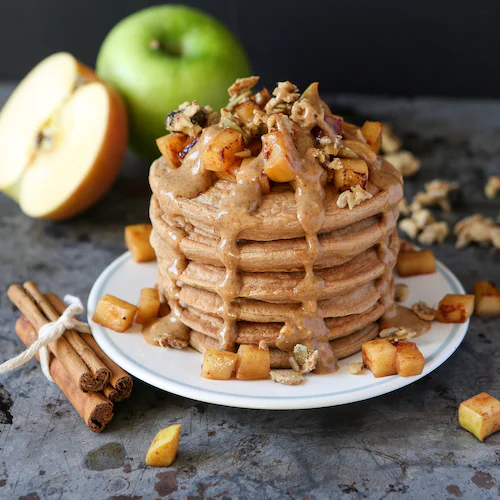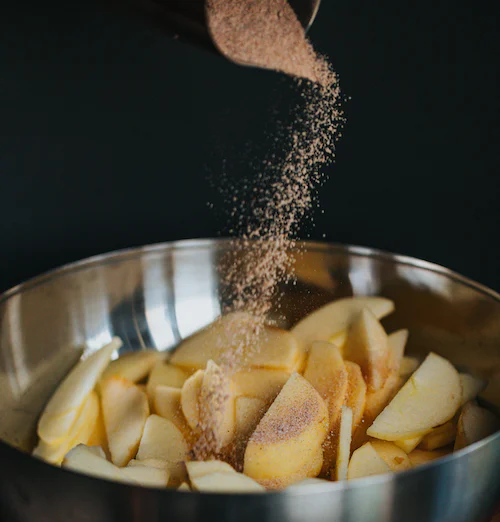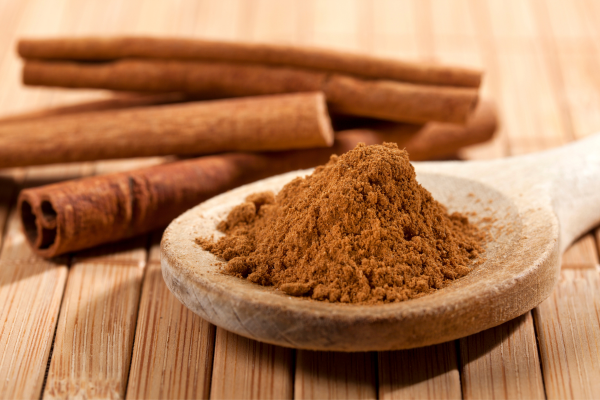A Spice with a Storied Past
Cinnamon has an illustrious history that traces back to ancient civilizations. Furthermore, in the ancient world, it wasn’t merely used for its flavor; it also held medicinal properties. This spice is obtained from the inner bark of trees belonging to the Cinnamomum family. Interestingly, both varieties offer unique flavor profiles and a range of culinary applications.
Different Types
Ceylon: Often referred to as “true cinnamon,” Ceylon is known for its delicate, sweet, and complex flavor profile. It features a pale, tan color and is considered the premium variety due to its subtler taste.
Cassia: On the other hand, Cassia cinnamon, sometimes called “Chinese cinnamon,” is bolder and more intense in flavor. It boasts a darker, reddish-brown color and is the variety commonly found in North America.
Culinary Uses of Cinnamon
Baking: Cinnamon takes the spotlight in many baked goods, adding warmth and depth to treats such as cinnamon rolls, apple pies, and snickerdoodle cookies.
Spice Blends: It’s an integral component of various spice blends, like pumpkin pie spice and chai masala, which enhance the flavor of seasonal favorites and exotic beverages.
Sauces and Marinades: Cinnamon finds its way into both sweet and savory sauces, imparting a subtle sweetness to dishes like Moroccan tagines and Indian curries.
Beverages: This aromatic spice is an essential ingredient in hot beverages like chai tea and mulled wine, elevating them with its comforting qualities.
Desserts: Moving beyond baked goods, cinnamon often serves as a delightful finishing touch when sprinkled over desserts like rice pudding, ice cream, and custards.
Sourcing Considerations
In the role of a food ingredient distributor, sourcing high-quality cinnamon becomes a foundational step in ensuring your products consistently meet the highest standards of taste and quality. Here, we outline some crucial factors to consider when procuring cinnamon, taking the present tense into account:
Type: To begin, start by determining whether you require Ceylon or Cassia cinnamon. These two varieties offer distinct flavor profiles and come with differing price points.
Origin: Cinnamon is currently grown in various countries, including Sri Lanka, Indonesia, China, and Vietnam. The terroir, representing the environmental conditions in which cinnamon flourishes, exerts a notable influence on its flavor. It is imperative to consider your desired flavor profile and align your sourcing accordingly.
Ground vs. Whole: You have the option to procure cinnamon in the form of a ground spice or in the shape of whole sticks. Each of these forms serves particular purposes; ground cinnamon is highly convenient for baking, while whole sticks excel at infusing flavor into liquids and slow-cooked dishes.
Organic and Sustainability: Should your product line emphasize organic or sustainably sourced ingredients, it is vital to ensure that the cinnamon you select aligns with these principles.
Packaging: Lastly, perform a comprehensive evaluation of your packaging needs, with a focus on your present production requirements. Whether you are handling bulk quantities in bags, jars, or other types of containers, the right packaging plays a pivotal role in your ongoing sourcing strategy.


Recipe: Cinnamon-Spiced Apple Crisp
Let’s put the aromatic qualities of cinnamon to work with a delightful recipe that will leave your customers craving more:
Ingredients:
- 6 cups of sliced and peeled apples (e.g., Granny Smith, Honeycrisp)
- 1 tablespoon lemon juice
- 1 teaspoon pure vanilla extract
- 1 cup rolled oats
- 1/2 cup all-purpose flour
- 1/2 cup granulated sugar
- 1/2 cup brown sugar
- 1 teaspoon ground cinnamon
- 1/2 teaspoon ground nutmeg
- 1/4 teaspoon salt
- 1/2 cup cold unsalted butter, diced
- Vanilla ice cream or whipped cream for serving (optional)
Instructions:
- Preheat your oven to 350°F (175°C).
- In a large mixing bowl, combine the sliced apples, lemon juice, and vanilla extract. Toss to coat the apples evenly, then transfer them to a greased 9×13-inch baking dish.
- In a separate bowl, combine the rolled oats, all-purpose flour, granulated sugar, brown sugar, ground cinnamon, ground nutmeg, and salt. Mix well.
- Add the cold, diced butter to the dry mixture. Use a pastry cutter or your fingers to work the butter into the dry ingredients until the mixture resembles coarse crumbs.
- Sprinkle the crumb topping evenly over the apples in the baking dish.
- Bake in the preheated oven for 40-45 minutes, or until the topping is golden brown, and the apples are tender.
- Remove from the oven and let it cool slightly before serving.
- Serve warm, optionally with a scoop of vanilla ice cream or a dollop of whipped cream for an extra treat.
This Cinnamon-Spiced Apple Crisp combines the comforting warmth of cinnamon with the sweet-tartness of apples to create a delightful dessert that’s perfect for any occasion.
A Sweet Spice
Cinnamon, often referred to as the spice of culinary excellence, boasts a rich history, diverse flavor profiles, and a wide range of culinary applications. As a food ingredient purchaser, understanding the various types, culinary uses, and sourcing considerations of cinnamon is essential to incorporate this aromatic spice into your product offerings successfully.
Whether you’re crafting delectable baked goods, savory sauces, or comforting beverages, cinnamon has the power to elevate your creations by infusing them with warmth, depth, and character. So, embrace the timeless allure of cinnamon. Watch it transform your food products into culinary delights that leave a lasting impression on your customers’ taste buds.
